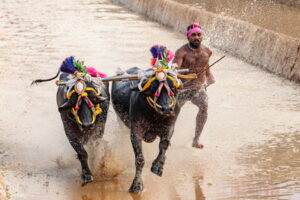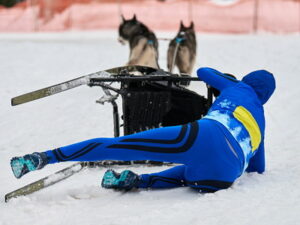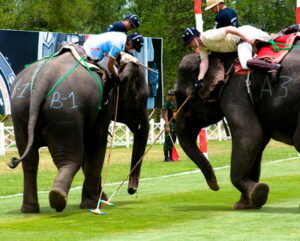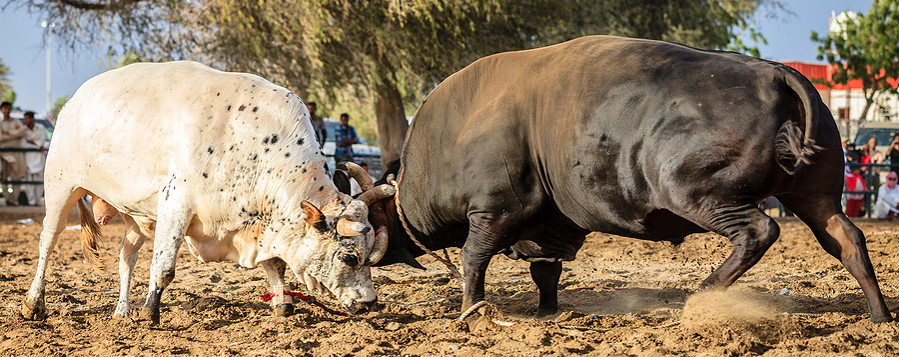 It’s not uncommon to see online sportsbooks provide betting opportunities for horse racing and greyhound racing. These popular animal events have been around for centuries and remain at the forefront of sports betting for many people.
It’s not uncommon to see online sportsbooks provide betting opportunities for horse racing and greyhound racing. These popular animal events have been around for centuries and remain at the forefront of sports betting for many people.
However, these are not the only animals that are set to compete in events that avid gamblers can place a bet on. There are actually other animals that countries from around the world set against one another in races, fighting or other events people can bet on.
What types of events can take place that feature animals other than horses and dogs that you can bet on? Here we will look at the various forms of animal racing that exists around the globe as well as some of the weirder animal bets that people partake in.
Racing Events Featuring Animals
 Whenever someone mentions the words ‘animal racing’, it’s quite common for us all to think of horse racing and/or greyhound racing. That’s just because they’re the two most popular types of racing events featuring animals. For this reason, most online sportsbooks have one or both of these options available for players to bet on. However, beyond this, there are some other animals that are raced against one another, providing some rarer betting opportunities for people.
Whenever someone mentions the words ‘animal racing’, it’s quite common for us all to think of horse racing and/or greyhound racing. That’s just because they’re the two most popular types of racing events featuring animals. For this reason, most online sportsbooks have one or both of these options available for players to bet on. However, beyond this, there are some other animals that are raced against one another, providing some rarer betting opportunities for people.
While it is true that horse racing requires a jockey for the competition, it is not the only one that involves a human alongside the animal. Sled dog racing is a winter dog sport, which is most popular in Arctic regions of the United States, Canada, Russia, Greenland and a few European countries. In it, sled dogs pull a sled with the dog driver (also known as the musher) standing on the runners.
These sleds and packs of dogs are raced against one another in timed competition, with the team completing the marked course in the fastest time being deemed as the winner. Despite this sport not gaining official event status at the Olympics, it has appeared there. It was a demonstration sport in the 1932 Winter Olympics at Lake Placid, New York, as well as at the 1952 Winter Olympics in Oslo, Norway. The last time it was seen was in 1994 when the Winter Olympics took place in Lillehammer, Norway.
 Pigeon racing is something else that many people witness and place bets on. This sees people wagering on homing pigeons finding their way back home from a set distance. Using specially trained birds, owners release the pigeons and then measure the time it takes for it to cover the specified distance, as well as the rate of travel. The figures are then compared with those of all the other pigeons in the race and this determines which animal flew back at the highest speed.
Pigeon racing is something else that many people witness and place bets on. This sees people wagering on homing pigeons finding their way back home from a set distance. Using specially trained birds, owners release the pigeons and then measure the time it takes for it to cover the specified distance, as well as the rate of travel. The figures are then compared with those of all the other pigeons in the race and this determines which animal flew back at the highest speed.
It is believed that this animal racing sport dates back as far as 220 AD. However, in 2011, the Customs and Excise tribunal took the decision and stated that pigeon racing is not a sport. The ruling was met with outrage from fanciers (keepers), as it meant that their clubs would not be exempt from VAT. The rising cost of keeping pigeons and racing them has been responsible for a huge decline in pigeon racing today.
For something that’s a little bit more “out-there”, you will need to travel to India. In the southwestern state of Karnataka, an annual event known as “Kambala” is held. Traditionally sponsored by local Tuluva landlords and households in the coastal districts of Dakshina Kannada and Udupi of Karnataka, it sees whip-lashing farmers racing on buffalo. The racetrack that the animals compete on is a slushy paddy field, with two pairs of buffaloes competing against each other at a time. In history, the winning pair of buffalo would be rewarded with coconuts and bananas.
Today however, the winning owners are given gold and silver coins as their reward. It has also become commonplace for Indian natives within the state of Karnataka to have their own bets on which buffalo they believe will win. One of the most famous buffalo racers, Srinivas Gowda, has been compared with Olympic gold medallist sprinter Usain Bolt, thanks to a record-breaking win during one year’s Kambala.
Non-Racing Events Featuring Animals
 You needn’t look too far to witness a non-racing evenst that incorporate animals. The game of polo, for example, is one that requires riders on horseback to hit a ball with mallets. It’s actually one of the world’s oldest team sports, dating back to the 6th century BC. It even became an Olympic sport from 1900 to 1936, and today is known as “the sport of kings”. Each polo team has four mounted riders, and the game can last up to two hours, divided into periods called chukkas. While rarer than most sports, it’s not impossible to find an online sportsbook that offers wagers on polo.
You needn’t look too far to witness a non-racing evenst that incorporate animals. The game of polo, for example, is one that requires riders on horseback to hit a ball with mallets. It’s actually one of the world’s oldest team sports, dating back to the 6th century BC. It even became an Olympic sport from 1900 to 1936, and today is known as “the sport of kings”. Each polo team has four mounted riders, and the game can last up to two hours, divided into periods called chukkas. While rarer than most sports, it’s not impossible to find an online sportsbook that offers wagers on polo.
What may come as more of a surprise in this area, is that elephant polo is quite the odd variant of this. Basically, the horses are traded out for elephants in this version, and it is still played in Nepal and Rajasthan, India today. The equipment used consists of a standard polo ball, as well as six to ten foot cane sticks with a polo mallet head on the end. The pitch for elephant polo is three-quarters of the length of a standard polo pitch, due to the fact that elephants don’t have as much speed or manoeuvring capability as horses.
Two people ride each elephant, being steered by one known as the mahout, while the other is the player who tells him which to go so he can hit the ball. The sport has been repeatedly accused of cruel treatment towards elephants though, leading to match cancellation, sponsorship withdrawal and the removal of references to elephant polo records in the Guinness Book of World Records.
Animal Fighting, Hunting and Violent Events

Sometimes, it goes way beyond simple competition featuring animals. Humans seem to relish in watching others go to battle with one another, and this has extended to the animal world for our amusement. That being said, in most countries, these barbaric acts have been labelled as cruel, and therefore banned by law. However, it’s not the case in all countries, and there are still places where animal fighting occurs, and people take the decision to bet on the events’ outcomes.
Bull wrestling, or cow fighting as it’s sometimes known, is a non-lethal bloodsport that pits bulls or cows against one another. The most common locations within Europe for this to happen are Bosnia and Herzegovina and Croatia. Known as korida, bullfights are often found to occur in Grmeč, a mountain to the extreme west of Bosnia. These events have been held every first Sunday in August for over 200 years, and they attract thousands of visitors each year. The fights occur in an empty field, but there are no deaths of the bulls included. Bull fighting is also found in Turkey, Japan’s Ryukyu Islands, China, Vietnam, Kenya, Laos, Oman and India.
In a similar vein, camel wrestling has become a sport that occurs in Turkey, where two male Tülü camels are pitted against one another. This is done typically in response to a female camel being in heat that is paraded around before them. Camel wrestling is most common in the Aegean region of Turkey, although it is also practiced in parts of the Middle East and South Asia.
A camel that is successful in one of these wrestling bouts can be sold for more than $20,000, although any spectators place themselves in hazardous conditions. Should a camel attempt to flee through the crowd, people are likely to get trampled in the process. Animal rights campaigners have criticised the practice as cruel though, but it continues to hold footing in Turkey, bringing in many tourists from international locations. People also proceed with placing wagers on the camel they believe will win at the same time.
Humans have been known to go into combat against animals in some countries as well, where it is deemed a lawful sport. Bullfighting has a long history in both Spanish and Portuguese tradition, although it has been the victim of a range of concerns including animal welfare, funding and religion in more recent times. Mainly due to the fact that the bullfighter is required to immobilize and sometimes kill the bull. It is for this reason that the sport has been banned in most countries around the world.
 In perhaps one of the more bizarre variations of animal fighting though, Macau and Hong Kong are known for holding cricket fighting competitions. Gambling on these events is not against the law in these locations, either. The practice involves the fighting of male crickets, although this rarely causes injuries to the insects, unlike bullfighting or cockfighting. Crickets actually have pedigrees as well, being carefully bred by knowledgeable keepers.
In perhaps one of the more bizarre variations of animal fighting though, Macau and Hong Kong are known for holding cricket fighting competitions. Gambling on these events is not against the law in these locations, either. The practice involves the fighting of male crickets, although this rarely causes injuries to the insects, unlike bullfighting or cockfighting. Crickets actually have pedigrees as well, being carefully bred by knowledgeable keepers.
The animals are kept in their own clay pots and are fed on a diet of ground shrimp, red beans, goat liver and maggots. Prior to fight night, female crickets are dropped into the pot in a bid to increase the male cricket’s fighting spirit. The fights are arranged according to weight class, and the losing cricket in a fight is the first that begins avoiding contact, runs away from battle, stops chirping or is thrown from the fighting container!
It should come as no surprise that there are also countries where the lawful killing of animals for sport is available to partake in. Hunting in itself began as a crucial component of hunter-gatherer societies, but this was done for food. Unfortunately, it became a sport of the upper classes, with most parts of medieval Europe seeing it as a privilege to hunt in certain areas of a feudal territory. That remains the situation today, with the aristocracy partaking in hunting for sport, although this isn’t usually gambled on.
Fishing is one of those sports that is most commonly played as a pastime or hobby. However, it is also noted as a competitive sport, known as recreational fishing or sport fishing. Sport fishing methods vary depending upon the area being fished in and the species being targeted. Fly fishing is something more commonly associated with the aristocracy, but sport fishing is usually done with a hook, line, rod and reel rather than with nets. While it was common in history for the fish to be killed by the anglers before they were weighed, this is different today. Sport fishermen usually catch and release the fish, and sometimes tag and release them to record vital statistics.
Unusual Animal Racing Events
 Alongside there being some common animal racing events, there are some fairly odd events featuring animals racing against each other…and even some with humans involved, too. Shetland Pony racing for example, is one such event. The Shetland ponies are fortunately not ridden by adults, but by children in full jockey gear. The last event, which took place in Suffolk in 2019, saw Zak Kent, 12, pick up the victory when he beat out second-place competitor Lucas Murphy by a nose-length. Rules of this competition dictate that jockeys must be between nine and 14, and be under 5ft tall.
Alongside there being some common animal racing events, there are some fairly odd events featuring animals racing against each other…and even some with humans involved, too. Shetland Pony racing for example, is one such event. The Shetland ponies are fortunately not ridden by adults, but by children in full jockey gear. The last event, which took place in Suffolk in 2019, saw Zak Kent, 12, pick up the victory when he beat out second-place competitor Lucas Murphy by a nose-length. Rules of this competition dictate that jockeys must be between nine and 14, and be under 5ft tall.
Zebra racing and ostrich racing have also been recorded as events involving humans, but instead of riding horses, they’re on zebraback or ostriches! And duck racing is something that has blossomed from utilising actual ducks to rubber ducks! Thousands of rubber ducks are raced against one another on a river within a city. These usually operate as fundraising events, with the rubber ducks being given numbers enabling participants to “adopt” one for a small sum of money.
For something a little more entertaining, dachshund racing is a popular, albeit controversial sporting event, primarily taking place in North America. Typical races are either 25 or 50 yards in length and are run on various surfaces. In fact, many racetracks across the United States host such events, and it was introduced to Canada in 2018.
As a final note on something odd to experience, snail racing has become quite the phenomenon. While being an event that is much more humorous than it is competitive, gambling on the winner of such tournaments isn’t uncommon. Two or more land snails are pitted against one another, starting from the centre of a circular track and racing to the perimeter. The radius of that circle is usually set at 13 or 14 inches, and each snail has a racing number painted onto its shell. Serious snail bookies aren’t difficult to find when these events take place!